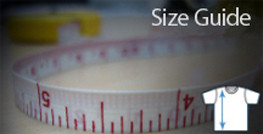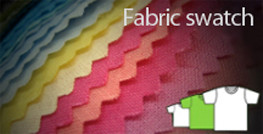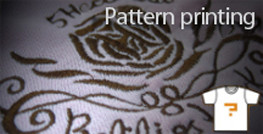2.What is the general shrinkage rate?
3.Any method to reduce shrinkage on uniform?
4.Is it possible to avoid shrinkage?
5.Is garment durable?
6.Can customers have special requirements during uniform ordering?
7.Will the collar of Polo-shirt and T-shirt crease after washing?
8.Will fabric form slub?
9.Will outerwear jacket fabric or wicking fabric get hooked?
10.Will color fading occur after washing?
Q: 1.Do garments, clothes, apparels, and uniform shrink?
A: Definitely. Shrinkage can be found on garments after washing as it is a nature property of textile materials. For example, Tee shirt, Polo shirt, uniform and other clothes styles which are mainly made of 100% cotton which has shrinkage nature because it is natural cotton fiber.
Q: 2.What is the general shrinkage rate?
A: It depends on the nature of fabric and its fabric construction. Shrinkage can be found most obviously on 100% cotton (approximately 8-10%) fabric. Loosely constructed fabric like pique (for making polo-shirt commonly) will also have bigger shrinkage after washing, larger shrinkage is found on ribs, waffle and interlock fabric etc as well.
Q: 3.Any method to reduce shrinkage on uniform?
A: Choose fabric mixed with polyester and cotton (For examples CVC or T/C). CVC and T/C fabrics are knitted from yarn which is blended from polyester and cotton, due to the polyester’s non water absorption nature, shrinkage can be improved. However, this fabric is less breathable and less soft than cotton. Another method is to apparels wash so that it can stabilize the shrinkage in advance.
Q: 4.Is it possible to avoid shrinkage?
A: No. No matter what materials they are (man-made fiber – polyester, or natural fiber - cotton, linen), physical limitations applied to these materials, Garment will shrink after it is worn and washed repeated. Using 100% polyester fabric can minimize the shrinkage problem; sportswear, sports uniform, sports bottom, vest and jacket are mainly made of 100% polyester fabric in order to minimize the shrinkage. Some auxiliary chemicals are added on the fabric of these sports apparels. For example, dry fit chemical agents are added to drive sweat away quickly and provide and good ventilation, making it more comfortable to wear when doing exercises.
A: It depends how the garment is used and handled during wearing and washing etc. Apparel is more durable if we follow the garment care instruction sewed to the garment. As garment is made from materials (such as cotton, polyester, etc.) which have their physical limitation, unavoidable appearance changing, color fading and print logo fading out will be found when the apparel is repeatedly worn and washed. Therefore, clients have to follow the garment care label to minimize the mistreatments that will shorten the life cycle of the apparel.
Q: 6.Can customers have special requirements during uniform ordering?
A: As a professional uniform provider, Uniform-standard provides not only opinions to our customers, but also fabric applications, production restrictions and tolerance information. However, one important thing that clients have to under stand is, as clothes is hand-made product, it is not perfect, different effects and restrictions can be found base on different applications (For Example use CVC or T/C fabric to minimize shrinkage, on the other hand, the apparel will not be as comfortable as 100% cotton).
Q: 7.Will the collar of Polo-shirt and T-shirt crease after washing?
A: It depends on the nature of fabric used for making the polo-shirt and T shirts. If the Tee or Polo is made of 100% cotton, it is more water absorbable as the fabric structure is more loosely packed, It will roll up after dry, making the apparel crumple, normally it is unavoidable. Customer can refer to care label for proper washing and drying method, or they can choose apparel made of mixed polyester and cotton (such as CVC, TC fabric) in garment. With polyester in fiber, less roll up and crinkle effect on apparel are found.
Q: 8.Will fabric form slub?
A: Yes, fluff is more likely to form on 100% cotton. When clothes is used and washed from time to time, cotton yarn will tear and break, some large cotton slub will form on the surface of the fabric. This is an unavoidable nature, but better cotton yarn with less impurity during spinning will cause less inter-linking between the yarns, thus slub will be less.
Q: 9.Will outerwear jacket fabric or wicking fabric get hooked?
A: There are many kinds of fabric for making jacket. Thin fabric like down-proof fabric or micro-fiber is more likely to get hooked, while wicking fabric is made of polyester, which is mostly formed in mesh structure and is also more likely to be hooked. Since there are pros and cons for different kinds of textiles, so fabric should be properly used according to the applications and functional needs of the apparel. Also, garment care is very important, as there are restrictions on the garment fabric, fabric will be damaged upon improper garment care (e.g. on washing, ironing, etc).
Q: 10.Will color fading occur after washing?
A: Normally, cotton fabric is dyed by reactive dye, the color absorption penetrate through the fiber and have good color fastness, therefore, we seldom find color bleeding during wash cotton T shirts, Polo shirt etc. However, color absorption may saturate in dark, deep navy colors, which sometimes exhibit color bleeding / staining if post-treatment in color fastness is not well conducted. On the other hand, polyester fabric are usually proceeded by disperse dye under high temperature. Customers have to understand that due to the repeat use and wash, the fiber itself will deteriorate and the color will also run vintage, result in a fading visual effect.






